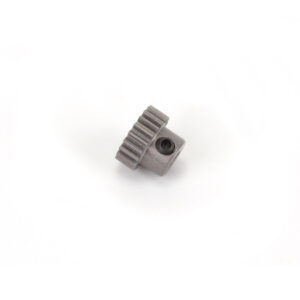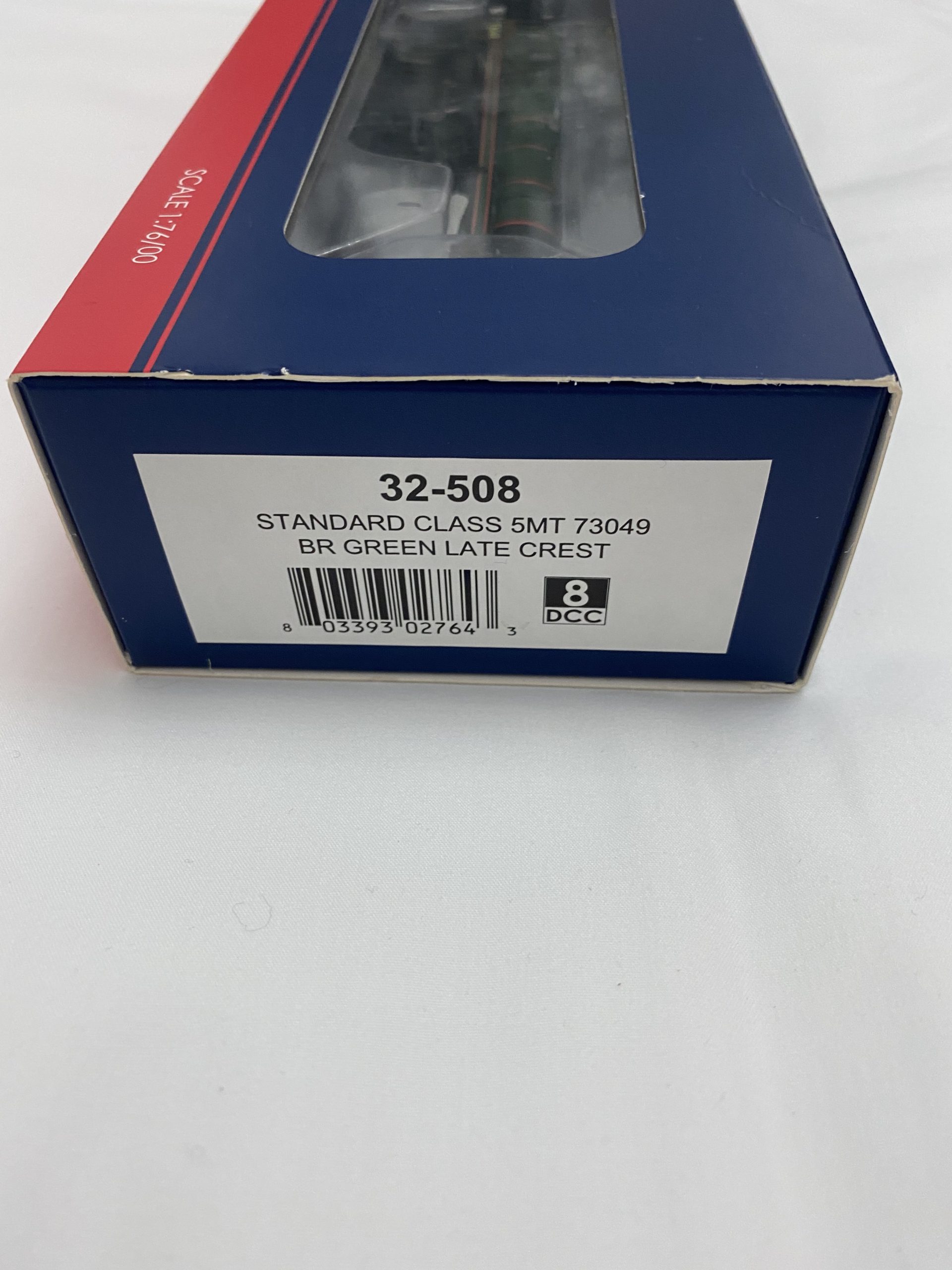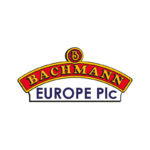You are here:
Bachmann 32-508 73049 Standard Class 5MT
Bachmann 32-508 73049 Standard Class 5MT 4-6-0 73049 in BR Lined Green with Late Crest & BR1 Tender 8 Pin Socket
Out of stock
Description
Bachmann 32-508 73049 Standard Class 5MT 4-6-0 73049 in BR Lined Green with Late Crest & BR1 Tender 8 Pin Socket
History
The British Railways Standard Class 5MT 4-6-0 was one of the 12 standard classes of steam locomotive built by British Railways in the 1950s. It was essentially a development of the LMS Stanier Class 5 4-6-0 (“Black Five”). A total of 172 were built between 1951 and 1957.
Background
William Stanier’s Black Five had been the most successful mixed-traffic type in Great Britain. Construction of the Black Fives had started in 1934 and continued past nationalisation to 1951. A new set of ‘standard’ locomotives was to be built by British Railways, based on LMS designs and incorporating modern ideas.
In particular, the Standard design incorporated features designed to make disposal of the engine after a working “turn” easier: a self-cleaning smokebox and a rocking grate removed the necessity for crews to undertake dirty and strenuous duties at the end of a long shift. This was a necessary investment with the ever-increasing costs of labour following the Second World War.
The original design proposal for the class 5 locomotive had a 4-6-2 wheel arrangement, similar in concept to the Bulleid Light Pacifics that performed impressively during the 1948 Locomotive Exchanges. However this was deemed unnecessarily large and costly for a class 5 power requirement, so the successful LMS Class 5 4-6-0 design was used as the basis instead. The pacific design went on to be enlarged and used for the BR Standard Class 6.
Design
The design work was done at the ex-LNER Doncaster Works but the bulk of the construction was done at Derby Works. The locomotive featured a BR standard boiler very similar in dimensions to the Stanier Type 3B fitted to the Black Fives but made from manganese steel instead of nickel steel. The most obvious visible changes were a higher running plate, slightly enlarged driving wheels (from 6 ft 0 in (1.829 m) to 6 ft 2 in (1.880 m)), increased cylinder bore (from 18? in (457 mm) to 19 in(483 mm)), a standard cab with external pipework and the regulator gland on the driver’s side of the boiler below the dome. Many of these changes were to reduce maintenance or to incorporate standard components that could be shared between other standard classes.
The first of the class, 73000, was outshopped from Derby in April 1951 and 30 were in service by January 1952. There was then a gap in construction before Derby resumed building its remaining 100 engines. 42 were built at Doncaster, starting in August 1955 and finishing in May 1957, with Derby’s last engine following a month later.
Thirty engines, numbers 73125 to 73154, were built with Caprotti valve gear and poppet valves, but not on this model represented.
Additional information
| Weight | 1000 g |
|---|---|
| Brand | Bachmann |
| Condition | New |
| Scale | OO/HO Gauge |
Related Products
Related products
-

Schumacher U3425 PINION HARD ALLOY 48DP – 25T
£3.99Out of stock






